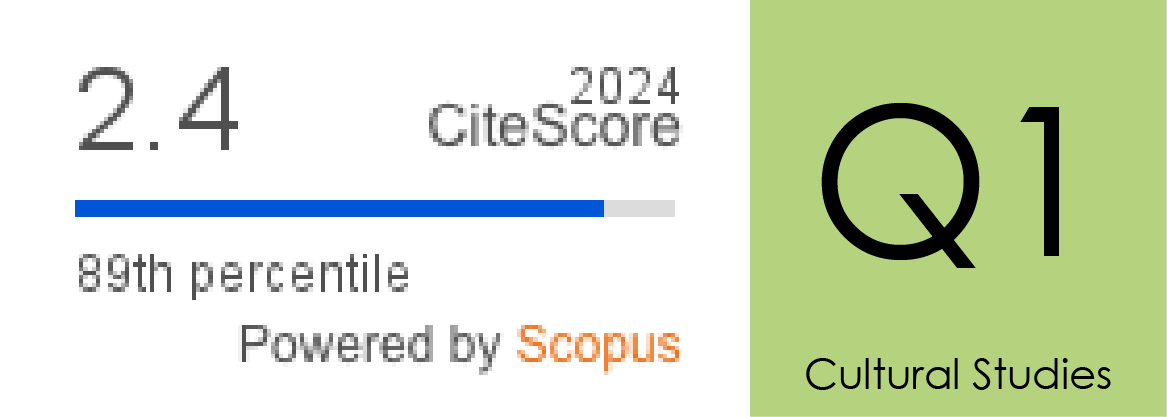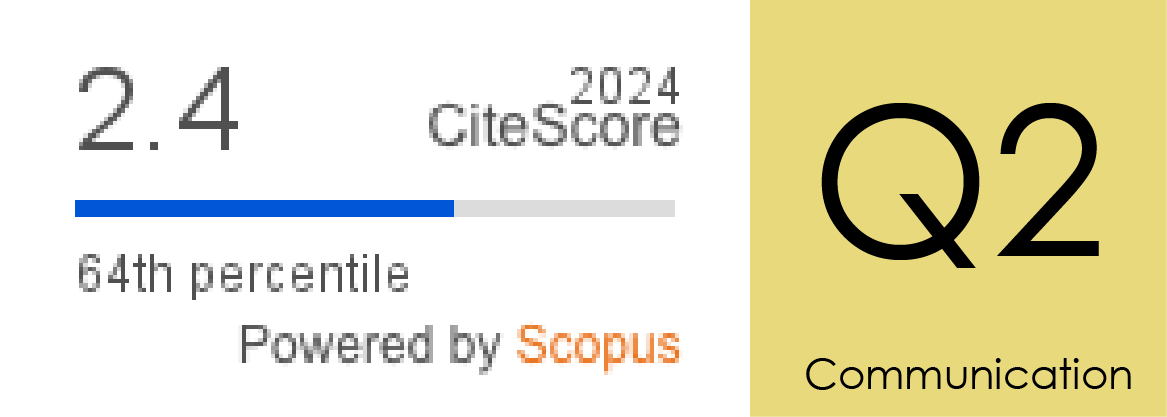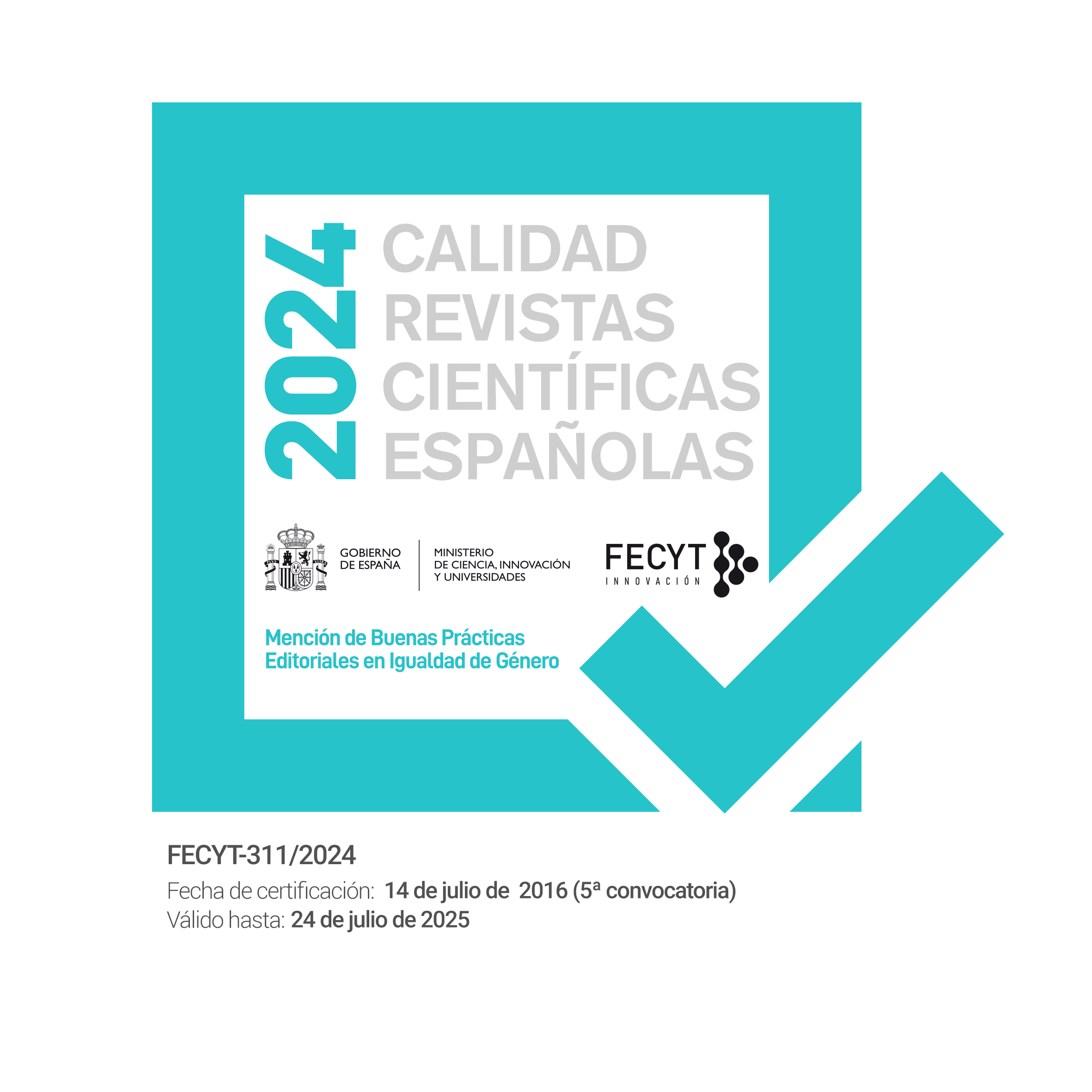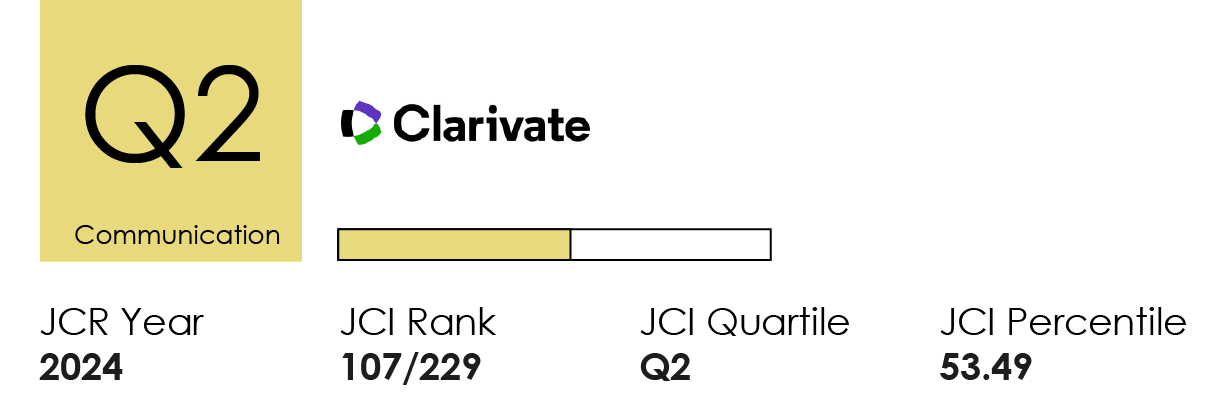Utilización del brand placement en la filmografía de Quentin Tarantino
DOI:
https://doi.org/10.14198/MEDCOM.25388Palabras clave:
product placement, Quentin Tarantino, cine, comunicación, publicidadResumen
La utilización del product placement como herramienta de comunicación y publicidad en los medios audiovisuales se ha ido incrementando en las últimas dos décadas al tiempo que iba decayendo el empleo de otras formas más tradicionales debido a un aumento de su rechazo por parte del público. Este estudio tiene como objetivo analizar en profundidad el uso del product placement en la filmografía de Quentin Tarantino, tratando de determinar el número de casos, los tipos de productos y marcas que más aparecen, el tiempo total por película que se destina a ello, el tipo de emplazamiento, así como otros aspectos técnicos relacionados con el mismo. La metodología empleada es de tipo cuantitativo a partir del análisis de contenido de los datos resultantes de la tabulación de todos los casos de product placement que aparecen en las películas del director. Los resultados de la investigación evidenciaron la presencia de product placement ficticio y, por lo tanto, su coexistencia con el product placement real, así como la preferencia por comunicar el emplazamiento de manera visual. Se concluye que Tarantino utiliza este tipo de publicidad en toda su filmografía, con un promedio de 41,7 casos por película, en su mayor parte de una forma intencionada para ambientar y aportar realismo en las escenas.
Citas
Al-Kadi, T. (2013). Product placement: A booming industry in search of appropriate regulation. Journal of Marketing Research & Case Studies, 2013(1), 1-13. https://doi.org/10.5171/2013.561655
Álvarez-Rodríguez, V. (2020). Tipos de product placement: Una visión teórica. International Review of Communication and Marketing Mix, 3(1), 7-22. https://doi.org/10.12795/IROCAMM.2020.v01.i03.01
Álvarez-Rodríguez, V. (2021). El product placement inverso en la ficción española: el caso Velvet. Área Abierta, Revista de Comunicación Audiovisual y Publicitaria, 21(1), 93-108. https://dx.doi.org/10.5209/arab.71378
Audrezet, A., De-Kerviler, G., & Moulard, J.G. (2020). Authenticity under threat: When social media influencers need to go beyond self-presentation. Journal of Business Research, 117, 557-569. https://doi.org/10.1016/j.jbusres.2018.07.008
Baños-González, M., y Rodríguez-García, T. C. (2012). Imagen de marca y product placement. ESIC. https://is.gd/NKgdcm
Benini, S., Canini, L., & Leonardi, R. (2010). Estimating cinematographic scene depth in movie shots. In 2010 IEEE International Conference on Multimedia and Expo: Estimating cinematographic scene depth in movie shots (pp. 855-860). IEEE Computer Society Digital Library. http://doi.org/10.1109/ICME.2010.5582611
Black, J. (2019). “You ain’t gonna get away wit’this, Django”: Fantasy, fiction and subversion in Quentin Tarantino’s, Django Unchained. Quarterly Review of Film and Video, 36(7), 611-637. https://doi.org/10.1080/10509208.2019.1593026
Bode, L. (2017). Making believe: Screen performance and special effects in popular cinema. Rutgers University Press. https://bit.ly/3YMg2je
Brescia-Zapata, M., y Matamala, A. (2020). La audiodescripción de la violencia: Estudio descriptivo de tres películas de Quentin Tarantino. Trans, Revista de Traductología, 24, 111-128. https://doi.org/10.24310/TRANS.2020.v0i24.9519
Cain, R. M. (2011). Embedded advertising on television: Disclosure, deception, and free speech rights. Journal of Public Policy & Marketing, 30(2), 226-238. https://doi.org/10.1509/jppm.30.2.226
Caldwell, J. T. (2005). Welcome to the viral future of cinema (Television). Cinema Journal, 45(1), 90-97. https://doi.org/10.1353/cj.2006.0001
Castelló-Martínez, A. (2020). Análisis del brand placement en La casa de papel. Ámbitos, Revista Internacional de Comunicación, 48, 223–245. https://doi.org/10.12795/Ambitos.2020.i48.12
Chan, F. F. Y., Lowe, B., & Petrovici, D. (2016). Processing of product placements and brand persuasiveness. Marketing Intelligence & Planning, 34(3), 311-328. https://doi.org/10.1108/MIP-03-2015-0051
Chernikova, A., & Branco, M. (2019). Product placement in computer/video games: an analysis of the impact on customers purchasing decision. Innovative Marketing, 15(3), 60. http://dx.doi.org/10.21511/im.15(3).2019.05
Clavel‐Vázquez, A. (2020). The diversity of intrinsic ethical flaws in fiction. The Journal of Aesthetics and Art Criticism, 78(2), 143-156. https://doi.org/10.1111/jaac.12726
Corkindale, D., Neale, M., & Bellman, S. (2023). Product placement and integrated marketing communications effects on an informational TV program. Journal of Advertising, 52(1), 75-93. https://doi.org/10.1080/00913367.2021.1981500
Del-Pino, C., y Olivares, F. (2007). Brand placement y advertainment: integración y fusión entre la ficción audiovisual y las marcas. ZER: Revista de Estudios de Comunicación, 12(22), 341-367. https://is.gd/2x8d8g
Eagle, L., & Dahl, S. (2018). Product placement in old and new media: examining the evidence for concern. Journal of Business Ethics, 147(3), 605-618. https://doi.org/10.1007/s10551-015-2955-z
Egger, M., Florack, A., & Hübel, C. (2022). How placement affects brand preferences in advergames: A test of inhibition and facilitation processes during search. Computers in Human Behavior, 134, 107328. https://doi.org/10.1016/j.chb.2022.107328
Elsaesser, T. (2019). Early cinema: space, frame, narrative. British Film Institute. https://bit.ly/3YGwt0o
Fondevila-Gascón, J. F., Gutiérrez-Aragón, Ó., Vidal-Portés, E., y Pujol-Cordero, O. (2023). Influencia del neuromarketing en la percepción de carteles publicitarios: factores determinantes en la atención. Gráfica, 11(22). https://doi.org/10.5565/rev/grafica.256
Gillespie, B., & Joireman, J. (2016). The role of consumer narrative enjoyment and persuasion awareness in product placement advertising. American Behavioral Scientist, 60(12), 1510-1528. https://doi.org/10.1177/0002764216660136
Gillespie, B., Muehling, D. D., & Kareklas, I. (2018). Fitting product placements: Affective fit and cognitive fit as determinants of consumer evaluations of placed brands. Journal of Business Research, 82, 90-102. https://doi.org/10.1016/j.jbusres.2017.09.002
Gistri, G., & Corciolani, M. (2020). Towards a better understanding of practitioners’ ideas about product placement: an empirical analysis in the Italian context. Italian Journal of Marketing, 2020(4), 261-288. https://doi.org/10.1007/s43039-020-00014-5
González-de-Dios, J., y De-la-Cruz-Amorós E. (2021). Cine y tabaco, el comienzo de una polémica amistad para el adolescente. Revista Pediatría de Atención Primaria, 23(89), 23-41. https://is.gd/JPKzlt
Gundle, S. (2020). We have everything to learn from the Americans: Film promotion, product placement and consumer culture in Italy, 1945-1965. Historical Journal of Film, Radio and Television, 40(1), 55-83, https://doi.org/10.1080/01439685.2020.1715596
Gutiérrez-Aragón, Ó., Gassiot-Melian, A., y Alabart-Algueró, J. (2021). Uso, aceptación y repercusión de las redes sociales y los influencers en el sector ecuestre. Doxa Comunicación, Revista Interdisciplinar de Estudios de Comunicación y Ciencias Sociales, 32, 115-142. https://doi.org/10.31921/doxacom.n32a6
Holm, D.K. (2004). Quentin Tarantino. The Pocket Essential. Summersdale Publishers. https://is.gd/zV01Sr
Hong, W., Yu, Z., Wu, L., & Pu, X. (2020). Influencing factors of the persuasiveness of online reviews considering persuasion methods. Electronic Commerce Research and Applications, 39, 100912. https://doi.org/10.1016/j.elerap.2019.100912
Huang, Y., & Deng, F. (2022). Impact of product placement on purchase intention in the context of product-harm crisis. Social Behavior and Personality: An International Journal, 50(6), 110-127. https://doi.org/10.2224/sbp.11586
Jin, S. V., & Muqaddam, A. (2019). Product placement 2.0: Do brands need influencers, or do influencers need brands? Journal of Brand Management, 26, 522-537. https://doi.org/10.1057/s41262-019-00151-z
Kerrigan, F. (2017). Movies. Consumption Markets & Culture, 21(5), 503-509. https://doi.org/10.1080/10253866.2017.1306207
Kretchmer, S. B. (2004). Advertainment: The evolution of product placement as a mass media marketing strategy. Journal of Promotion Management, 10(1-2), 37-54. https://doi.org/10.1300/J057v10n01_04
Kongmanon, J. & Petison, P. (2022). What do you see and what do you recall?: Using eye tracking to understand product placement. Cogent Business & Management, 9(1), 2120263. https://doi.org/10.1080/23311975.2022.2120263
Kumar, S. (2017). Influence of product placements in films and television on consumers brand awareness. Archives of Business Research, 5(2), 163-179. https://doi.org/10.14738/abr.52.2747
Lopera-Mármol, M., Jiménez-Morales, M., & Bourdaa, M. (2020). Televertising strategies in the age of Nonadvertising TV. In Mas-Manchón, L. (Ed.), Innovation in advertising and branding communication (pp. 154-168). Routledge. https://is.gd/9V23U3
Martín-García, A., y Victoria-Mas, J.S. (2019). Evolución del product placement: del cine de Hollywood a las redes sociales. En G. Paredes-Otero (Ed.), Investigar las redes sociales. Un acercamiento interdisciplinar (pp. 133-149). Egregius Ediciones. https://is.gd/lejzXA
Manyiwa, S., & Brennan, R. (2016). Impact of materialism on consumers' ethical evaluation and acceptance of product placement in movies. Social Business, 6(1), 65-82. https://doi.org/10.1362/204440816X14636485174958
Mothersbaugh, D. L., Hawkins, D. I., & Kleiser, S.B. (2020). Consumer behavior: Building marketing strategy. McGraw-Hill Education. https://is.gd/1ld90x
Murray, M. D. (2022). Trademarks, NFTs, and the Law of the Metaverse. SSRN, 6. https://dx.doi.org/10.2139/ssrn.4160233
Naderer, B., Matthes, J., & Zeller, P. (2018). Placing snacks in children's movies: Cognitive, evaluative, and conative effects of product placements with character product interaction. International Journal of Advertising, 37(6), 852-870. https://doi.org/10.1080/02650487.2017.1348034
Nathan, I. (2019). Quentin Tarantino: The iconic filmmaker and his work. White Lion Publishing. https://is.gd/XEQpg8
Neale, M., & Corkindale, D. (2022). Make product placement work for you: Get less exposure. Business Horizons, 65(2), 149-157. https://doi.org/10.1016/j.bushor.2021.02.034
Nymoen, O., & Schmitt, W.M. (2021). Influencer: Die ideologie der werbekörper. Suhrkamp Verlag. https://is.gd/hWhlxX
Olszynko-Gryn, J. (2017). Thin blue lines: product placement and the drama of pregnancy testing in British cinema and television. The British Journal for the History of Science, 50(3), 495-520. https://doi.org/10.1017/S0007087417000619
Pagello, F. (2020). Quentin Tarantino and film theory: Aesthetics and dialectics in late postmodernity. Springer. https://is.gd/PwnvLa
Paravati, E., Gabriel, S., Valenti, J., Valent, K., & Buffone, A. (2022). Social comparison, parasocial relationships, and attachment style: how and when do celebrities improve self-liking? The Journal of Social Psychology, 1-12. https://doi.org/10.1080/00224545.2022.2149385
Redondo, I., & Bernal, J. (2016). Product placement versus conventional advertising: The impact on brand choice of integrating promotional stimuli into movies. Journal of Promotion Management, 22(6), 773-791. https://doi.org/10.1080/10496491.2016.1214205
Redondo, I., Russell, C. A., & Bernal, J. (2018). To brand or not to brand a product placement? Evidence from a field study of two influence mechanisms of positive portrayals of alcohol in film. Drug and Alcohol Review, 37(S1), 366-374. https://doi.org/10.1111/dar.12671
Ribeiro-Cardoso, P. J., Vieira, L. H., y Serra-da-Fonseca, M. J. (2019). ¿Cómo percibimos la publicidad? Antecedentes de la actitud hacia la publicidad e implicaciones en la intención de compra. Revista Mediterránea de Comunicación, 10(1), 203-213. https://doi.org/10.14198/MEDCOM2019.10.1.14
Rivas, R. C. (2019). Tarantinos in the attic: A brief history of Quentin Tarantino’s use of trademarks in storytelling. Social Science Research Network (SSRN). http://dx.doi.org/10.2139/ssrn.3421966
Roche, D. (2018). Quentin Tarantino: poetics and politics of cinematic metafiction. University Press of Mississippi. https://is.gd/bouqgk
Rossolatos, G. (2017). A multimodal discourse analytic approach to the articulation of Martini’s “desire” positioning in filmic product placement. Social Semiotics, 27(2), 211-226. https://doi.org/10.1080/10350330.2016.1189232
Rúa-Durán, P. (2021). Análisis del product placement en la filmografía de Christopher Nolan (1998-2020). [Trabajo Final de Grado, Universidad de Valladolid]. https://bit.ly/3Z1xRua
Russell, C.A., & Rasolofoarison, D. (2017). Uncovering the power of natural endorsements: a comparison with celebrity-endorsed advertising and product placements. International Journal of Advertising, 36(5), 761-778. https://doi.org/10.1080/02650487.2017.1348033
Sanderson, J. D. (2018). Product placement and screen translation. Transferring references to US brands unknown to other cultural contexts. Cultus: The Journal of Intercultural Mediation and Communication, 11, 61-76. https://is.gd/adHhUD
Sharma, S., &Bumb, A. (2022). Product placement in entertainment industry: A systematic review. Quarterly Review of Film and Video, 39(1), 103-119. https://doi.org/10.1080/10509208.2020.1811606
Sherman, D. (2015). Quentin Tarantino FAQ: Everything left to know about the original Reservoir Dog. Rowman & Littlefield. https://is.gd/w38Jlo
Song, R., Meyer, J., & Ha, K.N. (2015). The relationship between product placement and the performance of movies. Journal of Advertising Research, 55(3), 322-338. http://dx.doi.org/10.2501/JAR-2015-012
Štarchoň, P., & Chorvátová, B. (2018). Practical use of product placement in Slovakia within 2007-2017. Megatrends and Media, 5, 123-132. https://is.gd/oRJVH3
Tarantino, Q. (2022). Cinema Speculation. HarperCollins.
Van-Reijmersdal, E. A., Boerman, S.C., Buijzen, M., & Rozendaal, E. (2017). This is advertising! Effects of disclosing television brand placement on adolescents. Journal of Youth and Adolescence, 46(2), 328-342. https://doi.org/10.1007/s10964-016-0493-3
Vashisht, D., & Royne, M.B. (2016). Advergame speed influence and brand recall: The moderating effects of brand placement strength and gamers’ persuasion knowledge. Computers in Human Behavior, 63, 162-169. https://doi.org/10.1016/j.chb.2016.05.022
Wing-Fai, L. (2015). Product placement with ‘Chinese characteristics’: Feng Xiaogang's films and Go Lala Go! Journal of Chinese Cinemas, 9(2), 125-140. https://doi.org/10.1080/17508061.2014.995955
Zhu, Q., Abdullah, Z., Jkom, A., & Tham, J.S. (2022). Purchase intention of products placed in Hollywood movies among Chinese youth in Beijing. International Journal of e-Collaboration, 18(3), 1-13. https://doi.org/10.4018/IJeC.307126
Descargas
Estadísticas
Publicado
Cómo citar
Número
Sección
Licencia
Derechos de autor 2018 Óscar Gutiérrez-Aragón, Joan-Francesc Fondevila-Gascón, Ariadna Gassiot-Melian, Minerva Hidalgo-Naharro

Esta obra está bajo una licencia internacional Creative Commons Atribución 4.0.
Los autores y autoras que publican en esta revista están de acuerdo con los siguientes términos:
1 Derechos de autor. Los autores y autoras conservan sus derechos de autor, aunque ceden a la revista de forma no exclusiva los derechos de explotación (reproducción, distribución, comunicación pública y transformación) y garantizan a esta el derecho de primera publicación de su trabajo, el cual estará simultáneamente sujeto a la licencia indicada en punto 2. Los autores pueden establecer otros acuerdos adicionales para la distribución no exclusiva de la versión de la obra publicada en la revista, siempre que exista un reconocimiento de su publicación inicial en esta revista.
© Los autores.
2 Licencia. Los trabajos se publican en la revista sujetos a la licencia de Reconocimiento 4.0 Internacional de Creative Commons (CC BY 4.0); los términos se pueden consultar en https://creativecommons.org/licenses/by/4.0/
Esta licencia permite a terceros compartir (copiar y redistribuir el material en cualquier medio o formato) y adaptar (remezclar, transformar y crear a partir del material para cualquier finalidad, incluso comercial), siempre que se reconozca la autoría y la primera publicación en esta revista (Revista Mediterránea de Comunicación (RMC) / Mediterranean Journal of Communication (MJC), Universidad de Alicante, DOI de la obra), se proporcione un enlace a la licencia y se indique si se han realizado cambios en la obra.
3 Política de autoarchivo. Se recomienda a los autores que difundan sus trabajos a través de Internet para favorecer una circulación y difusión más rápidas y, con ello, un posible aumento en la citación y alcance entre la comunidad científica y académica, en las siguientes condiciones:
No se permite a los autores depositar en un repositorio institucional o temático, página web propia, etc., las versiones preprint (versión antes de ser evaluada) o postprint (versión evaluada y aceptada para su publicación) de sus trabajos antes de su publicación, pero sí el artículo final publicado (versión del editor).













